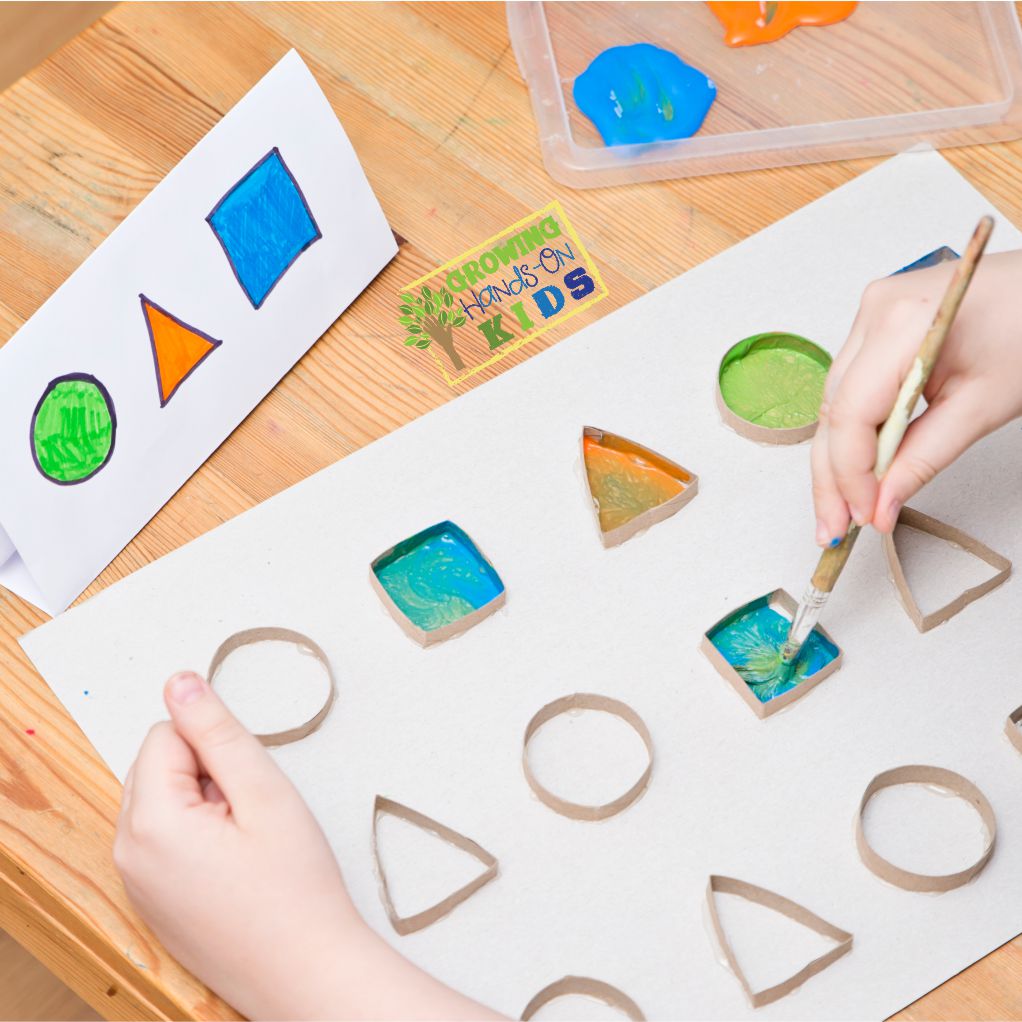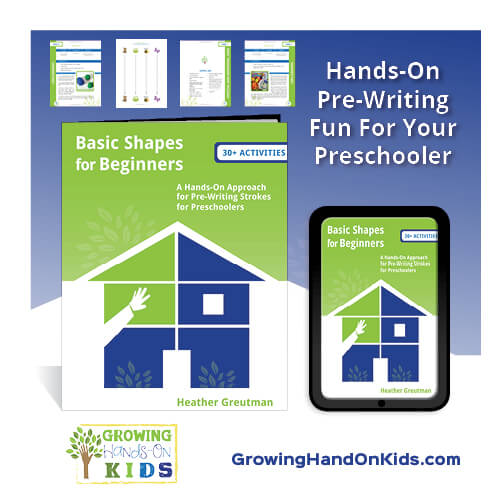Learning Shapes for Preschoolers – Making it Fun
Affiliate and Referral links are used below to promote products I love and recommend. I receive a commission on any purchases made through these links. Please see my disclosure policy for more details. As an Amazon Associate, I earn from qualifying purchases.
It can be hard to know how to best help your preschooler learn shapes. There are so many different ways to go about it, and some methods work better for certain children than others. Learning shapes for preschoolers can be fun too! Here are some tips on how to make learning shapes an enjoyable experience for little ones.
Why is learning about shapes important for preschoolers?
Shapes are all around us! Preschoolers can start learning about shapes by looking for them in their everyday surroundings. Circles can be found in the wheels of a car, in a friend's glasses, and in the sun up in the sky. Triangles can be seen in slices of pizza, on roofs of houses, and in sails on boats. squares can be found in tiles on the floor, in windows of buildings, and on stop signs.
As preschoolers learn to identify these shapes in their environment, they begin to develop an understanding of geometry. Furthermore, learning about shapes can also help preschoolers to develop important fine motor skills. For example, when coloring or drawing, preschoolers can practice tracing the outlines of different shapes. Ultimately, learning about shapes is a valuable early step in preparing children for future learning in mathematics and other sciences.
How can you help preschoolers with learning shapes?
There are many different ways that parents can help their preschoolers learn shapes. One way is to provide opportunities for exploration and discovery. For example, when grocery shopping with your child, point out the different shapes of fruits and vegetables. Ask your child to find circles, squares, and triangles in the environment.
Another way to help children learn shapes is through simple activities like coloring or playing games. There are many printable coloring pages available online that focus on teaching shapes. And there are also a variety of shape-based board games that can be enjoyed by the whole family.
By following these tips, parents can help their preschoolers learn about shapes in a fun and engaging way. In no time, children will be identifying shapes all around them!
Tips on how to make learning shapes fun
Learning shapes is an important foundation for early learning success. Kids who know their shapes have an easier time learning to read and do math. And, learning shapes can be fun! Here are a few tips to help your preschooler have a blast while learning their shapes:
Start with the basics.
Help your child learn the names of basic shapes like circle, square, triangle, and rectangle. As they become more familiar with the shapes, you can start teaching them more complex shapes like oval and diamond.
Check out Basic Shapes for Beginners – A hands-on approach to pre-writing strokes for preschoolers. Designed for ages 2-5 to be completed in 6 weeks. Includes resource list, items needed, organized by week, and printables for designated activities.
Make it a game when learning shapes for preschoolers.
Turn learning shapes into a game by hiding objects around the house and seeing if your child can identify them by their shape. You can also try drawing different shapes in the sand or dirt outside. See if your child can find and copy the shapes.
Use everyday objects.
Preschoolers learn best by exploring their environment. Use everyday objects to teach shapes like shoelaces, or ribbons. Show your child how to make a square or a triangle with these objects. By using familiar items, learning shapes become more interesting and easier for kids to remember.
Learning Shapes for Preschoolers – Play Games
One of the best ways for preschoolers to learn shapes is through play. There are a variety of games that can help kids to identify and remember different shapes.
One simple game is to cut out different shapes from construction paper and then have the child match them up.
Another option is to use a die to create a shape-based scavenger hunt. For instance, the child rolls the die and then has to find an object in the room that is that shape.
You can also use everyday objects to help teach shapes. For example, you can ask the child to find two things that are rectangular or three things that are triangular. By incorporating learning into play, kids will have fun while they're learning important early math concepts.
Geometric Shape Art Project to Try
If you have some recycled toilet paper rolls, try this geometric shape art project to help with learning shapes for preschoolers.
Materials Needed for the Geometric Shape Art Project:
- recycled toilet paper rolls
- piece of cardboard (you can use a recycled cereal box)
- scissors
- paint
- paintbrush
If you do not want to take out the paint, you can use markers for this activity.
Preparation:
- Cut the recycled toilet paper rolls into 1/2″ strips.
- Gently shape them into circles, squares, triangles, and whatever other shapes you wish.
- Glue them onto the piece of cardboard and let it dry.
- For older preschoolers or kindergarteners, make one small piece of cardboard with each shape on it. Color code it for the child.
How to Complete the Geometric Shape Art Project
- Put the activity on the table for the child.
- Show them how to color inside each of the shapes. Use language to reinforce the shapes as you offer the directions – color the squares blue, etc.
- The child can match the color code if you have provided it.
- Let it dry.
More Activities to Do with the Geometric Shape Art Project to Help With Learning Shapes for Preschoolers
After you let the masterpiece dry completely, you can use the art project for more multisensory activities to help with learning shapes for preschoolers. For example:
- use it with a sensory bin and fill the shapes up with dried beans, colored rice, etc.
- trace inside or outside the shapes for pre-writing practice.
- pull off small balls of playdough using the thumb and index finger. Push the small amounts of playdough inside the cardboard shapes.
- draw numbers 1, 2, or 3 inside of the shapes. Place pom poms on the table. The child can use tweezers or their fingers to pick up the correct number of pom poms to place inside the shape.
Learning Shapes for Preschoolers – A Multisensory Experience
Although worksheets or flashcards with shapes on them play a role when learning shapes for preschoolers, remember that there are other ways for children to learn. A multisensory experience is the best way for young children to learn and remember new information. By providing opportunities for your child to see, touch, feel, listen to, and even taste shapes, you can help them develop a strong foundation in geometry that will serve them well throughout their schooling years.
This blog post was contributed from YourTherapySource.com.

Heather Greutman, COTA
Heather Greutman is a Certified Occupational Therapy Assistant with experience in school-based OT services for preschool through high school. She uses her background to share child development tips, tools, and strategies for parents, educators, and therapists. She is the author of many ebooks including The Basics of Fine Motor Skills, and Basics of Pre-Writing Skills, and co-author of Sensory Processing Explained: A Handbook for Parents and Educators.


